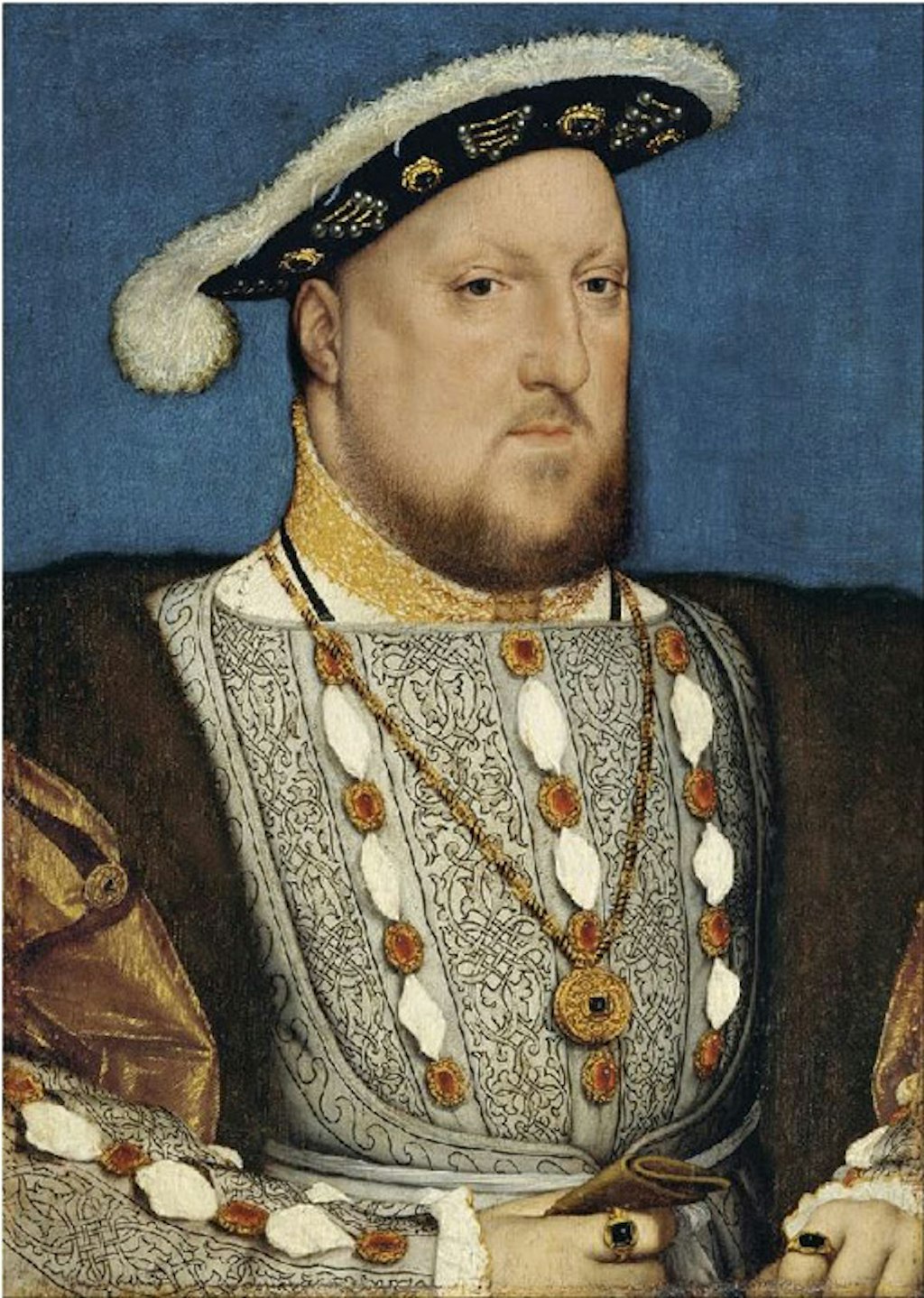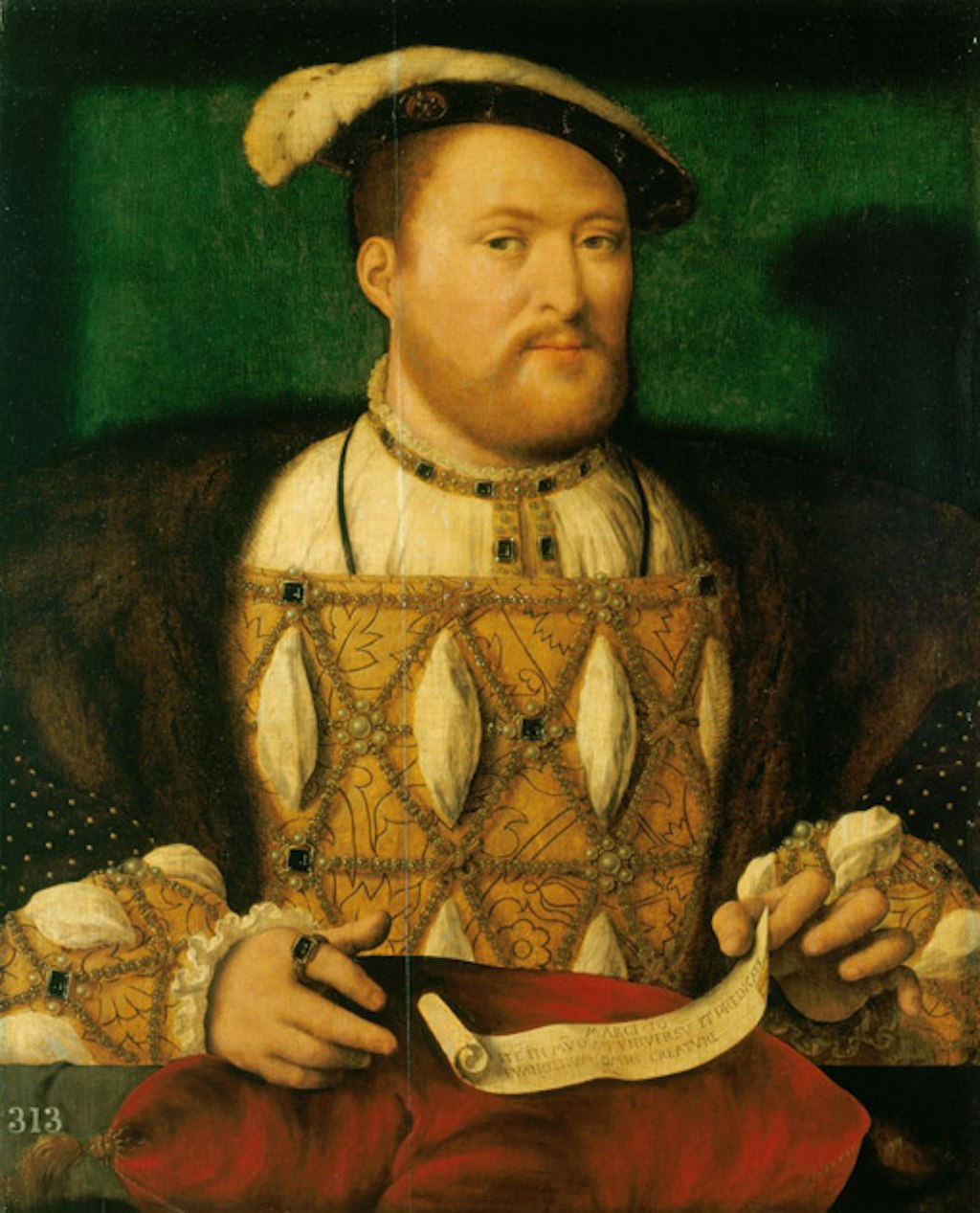Sharing your image, Tudor style

Portrait of Henry VIII c1537 by Hans Holbein the Younger from the Museo Nacional Thyssen-Bornemisza, Madrid, oil on panel, 28 × 20 cm (Inv no 191 (1934.39))
Portrait of Henry VIII c1537 by Hans Holbein the Younger from the Museo Nacional Thyssen-Bornemisza, Madrid, oil on panel, 28 × 20 cm (Inv no 191 (1934.39))
In early 16th-century England the art of portraiture was developing rapidly and there were more pictures of King Henry VIII in existence than of any earlier British monarch.
To create these images, artists often worked from portrait ‘patterns’ which circulated between artists’ workshops. These patterns involved making freehand copies or versions of another image for general sale.
The original artwork from which the pattern was derived was likely created by a painter appointed to the royal court, who was one of the few artists with the opportunity to take a direct likeness of important sitters.
Most portraits of Henry VIII produced after the mid 1530s were based on prototypes by Hans Holbein the Younger, a renowned German portraitist who was employed as the King’s Painter through his relationship with Thomas Cromwell – as readers and viewers of Hilary Mantel’s novel Wolf Hall may recall.
The portrait of Henry VIII in the Art Gallery of NSW collection is not one of these.
Instead, it belongs to what Roy Strong, director of the National Portrait Gallery in London from 1973 to 1987, called the ‘late non-Holbein pattern’.
The works in this group of paintings are all similar except for various costume details and the position of the hands.
It is not known whether these paintings come from a single workshop or were produced by a number of different workshops or artists, and it is unlikely that enough evidence will ever emerge to attribute individual examples to named artists.

Portrait of Henry VIII by Joos van Cleve, c1530-35, from the Royal Collection, oil on panel, 72.4 x 58.6 cm, acquired by Charles I from the Earl of Arundel (RCIN 403368)
Portrait of Henry VIII by Joos van Cleve, c1530-35, from the Royal Collection, oil on panel, 72.4 x 58.6 cm, acquired by Charles I from the Earl of Arundel (RCIN 403368)
It is possible that their pattern was based on Joos van Cleve’s portrait of Henry VIII in the Royal Collection, or maybe this is another version based on the same pattern.
It is clear that there were several artisan workshops active in London in the mid 16th century and they employed English artists as well as artists who were from, or trained in, the Netherlands, where the art of painting and portraiture was more highly developed.
Collaborative working practices encouraged the transfer of techniques between émigré painters and local artists, and the process of creating multiple versions of the same portrait also meant that artists were able to develop and refine their skills.
The influence of Netherlandish painting techniques can be seen in ‘our’ Henry in the fine brushstrokes used to depict his beard (each hair is painted separately and less than a millimetre wide) and the dabbing method used on the collar of his shirt.
Authorship of the Sydney painting and the similar works in London is now commonly attributed to an anonymous Anglo-Netherlandish workshop.
Examination of the London portraits suggests the convention was to include the shadow of the king’s hat on the wall behind him as well as slashed sleeves and a hand on the right side. The problem was these elements were not visible in the Sydney portrait.
To establish a stronger connection between the works, we needed to learn more. And for that we turned from the 16th century to the possibilities of 21st-century science, which we’ll explore in the next Henry VIII post.
The Gallery’s Henry VIII portrait is on display from 12 May to 9 September 2018 in Henry VR.
The conservation treatment project that sparked this research was supported by the Conservation Benefactors, most notably Dorothy R Spry (in memory of), Hamish Parker, Leonard Groat and Kenneth Reed AM.